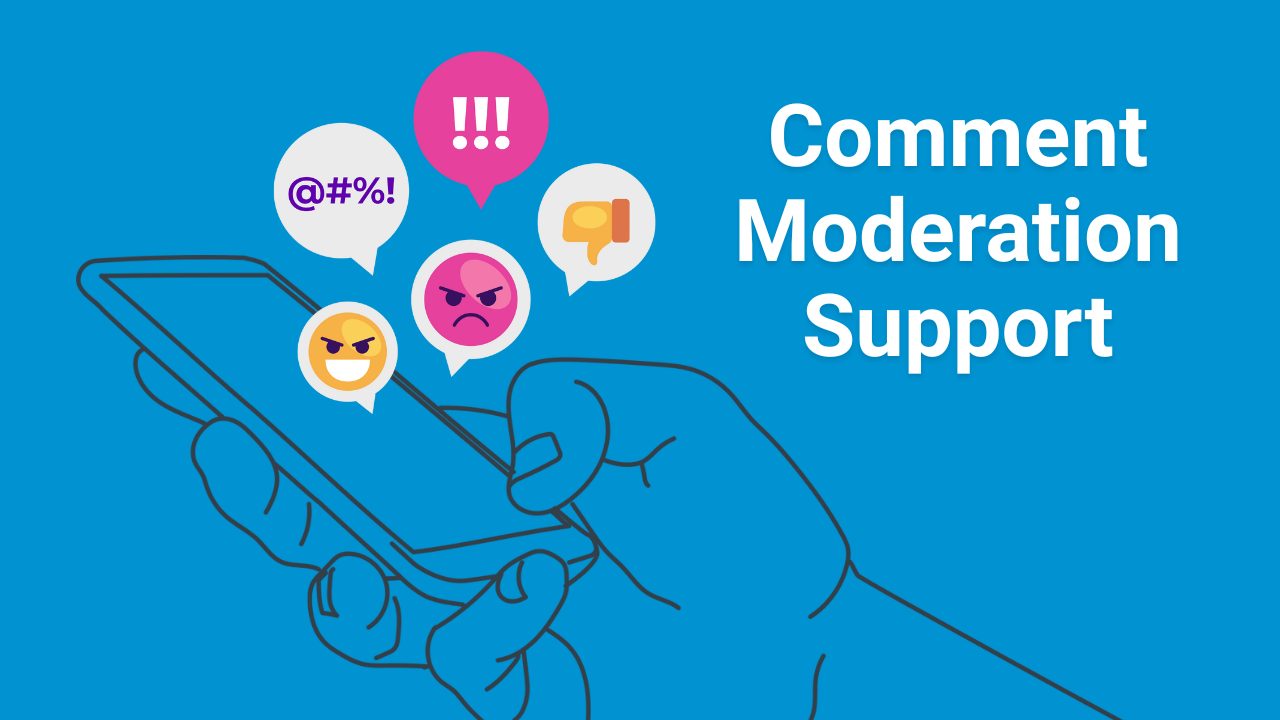
Lessons from 10 Years Working in Public Service Social Customer Care
Jun 03, 2021Contributed blog by Russel Lolacher, Director of Web and Social Media Services for the BC Ministry of Transportation and Infrastructure and author of the Relationships at Work blog
Time flies, and my decade in the public service at the BC Ministry of Transportation and Infrastructure has certainly attested to that. Ten years of leading a provincial government team in web services and social customer care has been a challenging and rewarding experience.
Oh, it’s been amazing. Our scope of work has grown from those early days to not only include leading our ever growing social customer care program and web development and maintenance but also in leading the business of DriveBC, hosting the annual Customer Satisfaction Survey, managing highway webcams, content marketing (video production, graphics, writing), communications strategy and consultation, user experience and research, newsletter editing and distribution, stakeholder relations, promotion, event planning, audio production, presentations, digital asset management, emergency communications, mentorship, change management, and more. I work with an amazing team of people that have almost all been on this journey with me from the beginning.
I have the pleasure of working within an organization that prioritizes customer service, which has been a huge benefit as we’ve worked to integrate our non-traditional pubic engagement and digital communications into the ministry’s operations.
With 10 years under my belt in the public service, there’s nothing like a milestone to get you feeling introspective. So here’s just a bit of what I’ve learned so far:
What I’ve Learned about Public Engagement
- Your audience wants to engage with you – conversations are happening about you and your industry, whether you are a part of them or not. Adding your voice provides a much needed perspective and resource, and that’s a great place to start building trust.
- Listening will serve you and your customers better – really listening to what your customers and stakeholders want and need can be a super power. You’ll find gaps in your communication that need to be filled, misinformation you’ll need to correct, misunderstand to be better explained and all with the opportunity to build relationships and yourself as a trusted resource.
- Empathy is everything – everyone is coming from a context of their own. Whether they agree or don’t agree with what you have to say, there is a personal reason behind it. You may never know what that is but you still need to approach them empathy and respect their need to say it.
- People connect with people, not brands – talk like a human. Though great for factual information, overly crafted messaging can make you seem unapproachable and robotic. It can also appear as if you’re not listening to the comments and questions being asked. Be human in your engagement – with humility, approachability, respect and care.
- Customers are passionate and they care about what you care about – generally everyone wants what’s best for their community. And people are passionate about what they are passionate about. Understand that your audience is interested in your subject matter and really want to talk to you about it, whether it’s their opinion, their feedback, their research, etc. They want to spend time with you.
- People want to be talked with, not talked at or down to – meet your customers in the same space they approach you. You are not better or worse than they are, just someone wanting to help as best you can.
- Everything should be responded to, except when you can’t – all comments should be monitored and responded to, even the negative ones. If you don’t have an answer to their critique, tell them their feedback is being shared with the relevant business area and then share it. If it falls to sexist, racist or demeaning language, your moderation policy should be shared and enforced.
- You’re not just talking to one person – in a public social environment, it’s not just the person asking the question or making the comment, it’s all those who see how you respond to that question or comment. You are a member of a community and need to act as such with how you respond, in timeliness and tone.
- Consistency is key – whether it’s in your activity or tone, it’s vital to not waver. Trust and engagement are hard to achieve if you only show up when you have something to say or need something. Community is built through actively being a member of that community. You must show up, every day.
- To get engagement, you must be engaging – whether it’s continually responding or commenting with your audience, creating behind the scenes and interesting content, sharing fun facts or playing guessing games, if you want your audience to find you interesting and worth engaging with, you need to be interesting and worth engaging with. Creativity, empathy, effort, humour… all ingredients to build connection.
Bonus: Embrace customer-centricity – during a user experience (UX) exercise of our public service websites in our team’s early years, one of the feedback quotes was “you wrote this for yourselves, not for us.” That comment was transformative for me and our team. Ever since then, we have made it a point to focus on what the customer would need, what would they want, what would answer their questions, how would they like to engage, etc. This has only helped us grow in engagement with our community.
What I’ve Learned about Employee Engagement
- Everything is about relationships – whether it’s with the individuals of our team, our larger branch, our department, the larger ministry, all success and failure comes from the strength of the relationships we form and nurture, or ignore. Collaboration, coaching, inspiration, motivation… no contribution comes without connection to others.
- Create an environment that supports passion and candour – I’ve always loved the metaphor of growing a plant when it comes to employee growth. A plant grows in the right environment, and so do staff. To get the best from your people and yourself, nurture a space where everyone can be constructively challenged and can demonstrate and explore what drives them.
- It’s about them, not about you – success is shared by all. Failure is owned by me. Take every opportunity to showcase your team’s successes and the great work they do everyday, including how it’s benefited others and the organization. If there’s a failure, look to yourself to determine how you could have served your team better (communication, support, etc.)
- Mitigate surprises – when you interact with anyone, make sure you loop everyone in that is impacted by your decisions. Allow them to ask questions and offer input, while you explain why decisions were made with context. Not everyone needs to agree on the final outcome but respect and trust or informed the more inclusive you are.
- Let personalities shine – your people are awesome. Provide space for each member of your team to be themselves and let them demonstrate what they bring to the table that is unique and helpful. Don’t try to conform them to some rigid uniform idea of what a “good employee” is.
- Don’t treat everyone the same – because they aren’t. Each works differently, each wants appreciation differently, each has their own strengths and weaknesses, and each is motivated by different things. Be respectful to the group but honour them as individuals.
- People are more engaged when they see and feel their work matters – make sure your team knows, sees and feels the value of the work they do. Regularly tie what they do to tangle benefits, whether that’s helping a customer or a coworker.
- Value of regular check ins – especially in an environment of remote work, make sure you check in with your team. This can be done organically (randomly or after a meeting you had) or scheduled (making regular time in the calendar). Both demonstrate your interest and your empathy in their care beyond the daily work you do.
- Learning is important – happiness can be tied to growth. You want your team to feel that they aren’t stagnant in their role and that they are encouraged to expand their professional development, either for the job they have or the one they want.
- Trust your team – you hired them to do a job. Trust them to do it, monitor the results. Otherwise, why did you hire them?
Bonus: Embrace coworker-centricity – I’ve always been uncomfortable with the term “employee”. Yes, I know it does have a purpose/meaning but it’s the spirit behind it that has always bothered me. I feel my team are far more co-workers than employees. Though we each have our own responsibilities based on our titles, they are far smarter, more creative and bursting with ideas than I am in many ways. We all benefit from each other. My role is to facilitate their leadership.
Ten years done. And I’m still growing, I’m still learning. And I look forward to so much more in my career.
Meet the author
 Russel Lolacher is the Director of Web and Social Media Services for the BC Ministry of Transportation and Infrastructure, defining and leading TranBC and @DriveBC in social customer care, emergency communications and public engagement. Sharing his thoughts through his blog, Relationships at Work, he has been internationally recognized as a top customer service expert by Microsoft and Hootsuite and in Forbes and Huffington Post. Follow Russel on LinkedIn.
Russel Lolacher is the Director of Web and Social Media Services for the BC Ministry of Transportation and Infrastructure, defining and leading TranBC and @DriveBC in social customer care, emergency communications and public engagement. Sharing his thoughts through his blog, Relationships at Work, he has been internationally recognized as a top customer service expert by Microsoft and Hootsuite and in Forbes and Huffington Post. Follow Russel on LinkedIn.
Best communicate with the public you serve by becoming a part of the free Government Social Media network — only available to full/part-time employees of government or educational institutions.
We support the largest network of government social media professionals in the U.S. by guiding government agencies through complex social media issues. Government Social Media helps you successfully communicate with the public you serve, protect your agency and keep public trust while finding your support community.
Government Social Media® empowers government professionals to achieve mastery in social media through conferences, online training, and association membership. Best communicate with the public you serve and get connected with fellow socialgovs by registering for the 2026 Government Social Media Conference happening in New Orleans, LA and virtually from wherever you are! Join the free GSM Network for text-only chats on socialgov topics or access the Government Social Media Association (GSMA) for regional virtual meetups and educational webinars.









